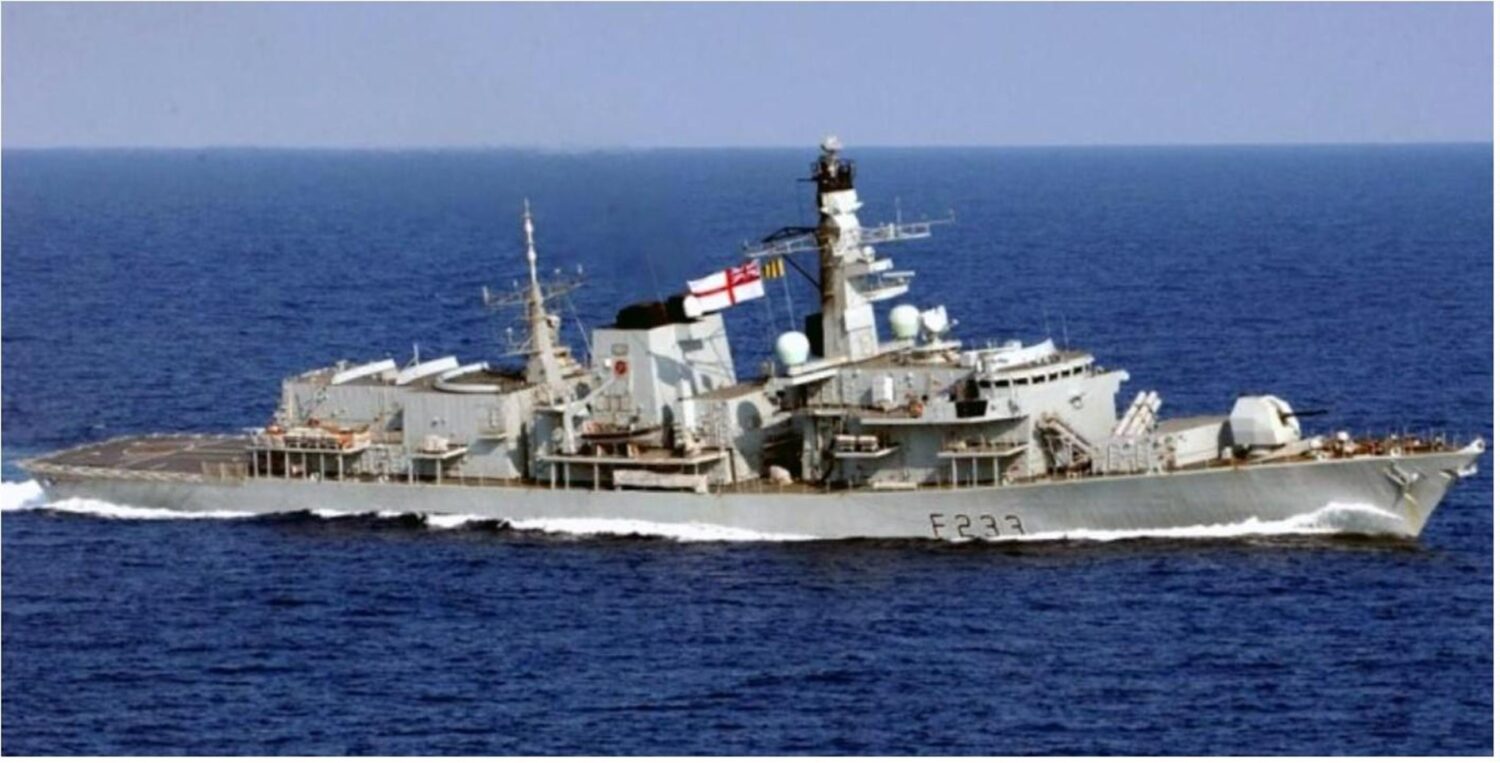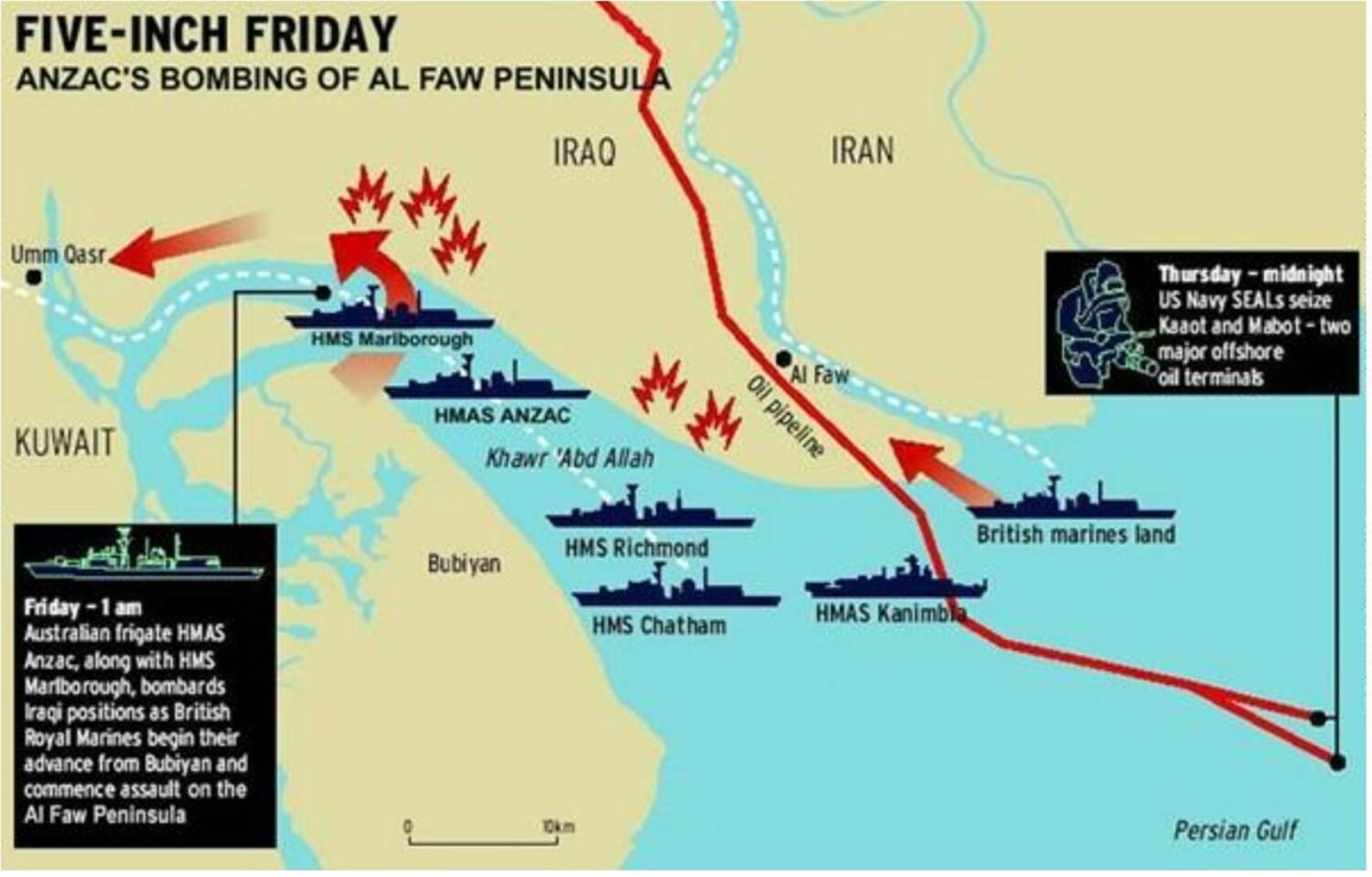| By Dennis J Weatherall JP TMAFAITT(L) LSM
Volunteer Researcher, Naval Historical Society of Australia |

| It took 31 years for the RAN to go to war and use a destroyer as agun platform. HMAS BRISBANE was the last DDG to serve on the Vietnam Gun Line andits last NGS mission occurred in September 1971. |
| HMAS ANZAC departed Fleet Base West for her deployment to theGulf on 28th October 2002. She was to be the first RAN destroyer since the Vietnam conflictto be used for the duty She was to be the first RAN destroyer since the Vietnam conflict to be used for the duty. She was designed, Naval Gun Support (NGS). |
| ANZAC was under the command of Captain Peter G. Lockwood,RAN, later to become Commodore P.G. Lockwood DSC, CSC, RAN now retired.Commodore Lockwood has been good enough to share his unclassified paperwork with the author. |
| His Supply officer, CMDR Stuart Wheeler RAN, wrote a paper titled“Five Inch Friday”. This paper was the only article other than the Captain’s post operation reportwhich is still classified. In future this report may become general reading material so there is littleinformation on which to base this paper in open source. |
| ANZAC was fitted with the following armament: |
| Single 5 inch 54 calibre (127mm)
Two Raphael Typhoon 12.7mm Phalanx 20mm close-in-weapons system Eight Harpoon Surface-to-surface missiles Mk. 41 vertical launch system – Sea sparrow and evolved Sea Sparrow Two triple Mk 32 torpedo launchers Various 12.7mm Browning and small arms |
| ANZAC third deployment to the Persian Gulf took her through toMay 2003, as part of Operation Falconer. On 21st March, ANZAC was called on to support aRoyal Marine assault on the “Al Faw” Peninsula. The Royal Marine’s mission was tocapture the peninsula before the Iraq forces could sabotage the oil terminals.
|
| On 19th March, US Navy Seals and Polish GROM forces commenced a sea and air assault under the command of Naval Special Warfare Task Group (CTG 561). ANZAC stood by to extract forces if required. The US Navy Seals secured both oilterminals. This action was followed by a wave of “Tomahawk” land attack missiles. Over 800missiles were delivered in the first 24 hours from 35 allied warships and submarines stationed in the Gulf. |
| On 20th March, Royal Navy ships Marlborough (Type 23), Chatham(Type 22) and Richmond (Type 23) were detached for bombardment duties. |

| The Royal Marines were faced by resistance from the Iraq Forces and called for immediateNGS to engage. Iraq Command Posts. ANZAC received the first call-for-fire at 05:58. ANZAC fired six ranging salvos followed by a five-round fire-for-effect with thesalvoes hitting bunkers and artillery positions. ANZAC answered another call-for-firedestroying a T59 artillery piece in a fire mission of just three rounds. It was extremely accurate fire and at near maximum range. |
| References: |
| Semaphore newsletter of the Sea Power Centre AustraliaIssue # 6, August 2003 |
| Maritime Campaign in Iraq, Vice Admiral Peter Jones AO DSCRAN Rtd.
Battle of Al Faw (2003) – 3 Commando Brigade, Royal Marines The War in Iraq – ADF Operations in the Middle East 2003, Australian Ministry of Defence – paper
|

